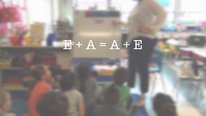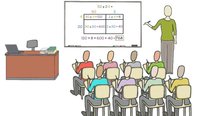- Daniel Heck
- http://www.horizon-research.com/about-hri/staff/daniel-j-heck
- Vice President
- Collaborative Research: An impact study to examine the efficacy of a mathematics professional development program for elementary teachers
- https://projectaim.wordpress.ncsu.edu/
- Horizon Research Inc
- Kristen Malzahn
- http://www.horizon-research.com/about-hri/staff/kristen-a-malzahn
- Senior Research Associate
- Collaborative Research: An impact study to examine the efficacy of a mathematics professional development program for elementary teachers
- https://projectaim.wordpress.ncsu.edu/
- Horizon Research Inc
- Courtney Plumley
- Research Associate
- Collaborative Research: An impact study to examine the efficacy of a mathematics professional development program for elementary teachers
- https://projectaim.wordpress.ncsu.edu/
- Horizon Research Inc
- Paola Sztajn
- https://ced.ncsu.edu/people/psztajn
- Associate Dean for Research and Innovation
- Collaborative Research: An impact study to examine the efficacy of a mathematics professional development program for elementary teachers
- https://projectaim.wordpress.ncsu.edu/
- North Carolina State University
Public Discussion
Continue the discussion of this presentation on the Multiplex. Go to Multiplex










Kristen Malzahn
Senior Research Associate
Welcome to the Project AIM: All Included in Mathematics: Expansion and Dissemination video. As explained in the project description, we are working to expand and disseminate a 40-hour professional development program focused on helping early elementary grades teachers promote high-quality discourse in their mathematics classrooms. The Project AIM professional development is designed as a face-to-face experience, but is stored and delivered through an online learning management system as a way to scale the program. Currently we are in the second year of our work and using a quasi-experimental design to examine impacts of the program on teachers and students. We are excited to share our professional development work with you and to hear your comments and questions about how best to support teachers in their efforts to promote high-quality discourse in their mathematics classrooms.
Gladys Krause
Research Associate
Thank you for sharing your video. I am so glad to see this work happening in the schools. Could you talk about how responsive discourse is being supported/developed in classrooms with bilingual students?
Kristen Malzahn
Senior Research Associate
Gladys,
Thank you for your important question. The professional development program draws on what is known about effective mathematics instruction for addressing English Learners’ (ELs) needs (such as providing students with challenging mathematical tasks, making strategic use of multimodal representation, and developing students’ academic language) to help teachers structure discourse practices in their classrooms that are inclusive and supportive of all students.
Considerations for supporting ELs’ engagement in mathematics discourse are built into the Project AIM professional development materials both implicitly and explicitly. They are embedded within the conceptual ideas behind the Project AIM foundation frameworks and more specifically highlighted in session plan activities (e.g., readings about important features of mathematics tasks that support discourse and equitable access in the classroom, discussions about types of ELs and various factors that influence the amount of support they need in the classroom). In addition, throughout the professional development program, teachers are provided with Discourse Strategy Handouts for each of the Project AIM discourse strategies. These handouts include sections outlining “Supports that Help” and “Ideas for Modifications” that are beneficial to ELs, and “Other Key Ideas” that provide explicit attention to how each strategy supports ELs.
Kristen Malzahn
Senior Research Associate
One main feature of the Project AIM professional development is providing early elementary teachers with discourse strategies adapted from literacy that can be used in their mathematics instruction. These strategies allow teachers to apply what they have learned in the professional development to their classroom practice throughout the academic school year, and to reflect on that instruction as it plays out in class.
How are others in the field supporting teachers (at the elementary and secondary levels) in engaging their students in productive mathematical conversations?
Wendy Smith
Associate Director
Project AIM is focused on the very important work of helping teachers enact high-quality and productive mathematical discourse in their classrooms. Can you say more about the support Project AIM provides to teachers as they plan and enact discourse in their classes? How do teachers get feedback on what they are trying? How do you help teachers to find the time to enact lessons with student discourse (both time for planning/reflection and time in the school day)? Do teachers in Project AIM ever watch each other (live or via video) to provide each other feedback?
Courtney Plumley
Research Associate
Hi Wendy,
Thank you for your questions. The 40 hours of Project AIM span 13 sessions – 6 in a summer institute and 7 monthly academic-year sessions. Among other things, the summer institute helps participants prepare for the school year by focusing on instructional moves that promote responsive discourse and ways to establish classroom norms to create mathematics discourse communities. Time is spent throughout the PD discussing how to plan for discourse-promoting lessons, including how to set mathematics AND discourse goals, and how to select discourse-promoting tasks. The PD also introduces several discourse strategies teachers can use in their mathematics classrooms. Each strategy can be incorporated into part of a mathematics lesson; none fully structure lessons. Accordingly, teachers can try out a strategy within a lesson that does not need to be radically different than their current mathematics instruction. Participants are able to try out these discourse strategies in their classrooms between the academic year sessions, and time is provided at the beginning of each session for teachers to reflect and debrief on their experiences. Additionally, the last 20-25 minutes of each session is devoted to planning time for teachers and their school-based teams.
The professional development does not use a live “studio” model. However, teachers do spend time during the PD analyzing authentic classroom artifacts, including video clips of teachers (most of whom are former Project AIM participants) implementing discourse strategies in their classrooms. At times they also rehearse enacting a strategy with other participants as a way to practice it prior to using it in their own classrooms.
Miriam Sherin
Professor, Associate Dean of Teacher Education
Thanks for sharing information on your project! I'm wondering how the PD sessions are facilitated. Because it's delivered through an online system, is no PD facilitator required? Do participants organize their own learning? Does each participant have access to the online materials? Are all the activities completed jointly or do teachers also work through some PD activities individually? Just wondering if accountability is at the group level or for individuals. Really important focus on improving classroom discussion! And the focus on strategies makes good sense to me so that teachers can work to embed what they are learning in lessons that they are already using.
Kristen Malzahn
Senior Research Associate
Thank you, Miriam, for your questions. To clarify, the Project AIM professional development is stored and accessed from an online learning management system, but it is delivered face-to-face by a facilitator. The facilitator and teachers meet for three days in the summer and then seven 3-hour sessions during the academic school year. Teachers attend in school-based teams (at least two teachers from a school) which allows for collaborative planning time during each academic year session.
A main goal of our work has been to scale up the Project AIM professional development program for broader use in the field. Part of this endeavor has entailed creating an extensive set of facilitator training and support materials in order to prepare future users and guide their implementation of the program. Currently we are examining the extent to which external facilitators can enact the program with fidelity.
We would be interested in hearing about the types of training and/or support structures others in the field offer outside facilitators. How is multimedia being used to deliver critical information to facilitators about program goals, content, conceptual frameworks, etc.?
Miriam Sherin
Professor, Associate Dean of Teacher Education
Great to hear about your process. I think we know a lot about how to do face-to-face facilitation well when it's "our own" programs - your work to explore ways in which external facilitators use the materials is an important next step!
Alex Jinks
Excellent program. In my education in integrative STEM, I've often come back to the idea of the intentional teacher. Math can sometimes be a passive learning experience dominated by recital and memorization, but your program has taken mathematics comprehension to a much deeper level. Many students also struggle with math and then are discouraged from the subject; your models of purposive teaching can help promote deep understanding and engage students in math experiences that go beyond memorization, hopefully encouraging some students to explore math further.
Kristen Malzahn
Senior Research Associate
We are preparing to recruit schools/districts for our next efficacy study to look at impacts of the Project AIM professional development on teachers and teaching and student achievement in mathematics. The study would begin the spring of 2018, with the professional development running from the summer of 2018 through the 2018-2019 school year. Our experimental design calls for 1st and 2nd grades teachers (treatment and comparison). One requirement is that teachers come in teams of at least two from a school.
What effective recruitment strategies have others used in their work?
Do you know of any schools/districts that might be interested in participating in our study?
Further posting is closed as the showcase has ended.